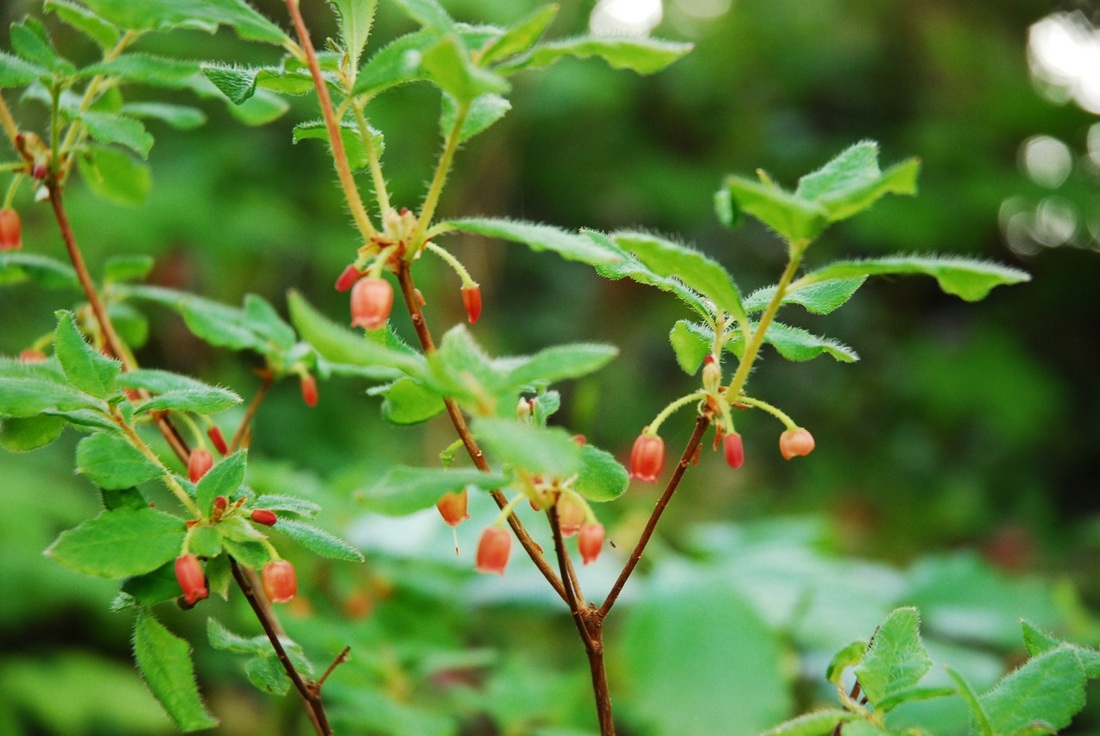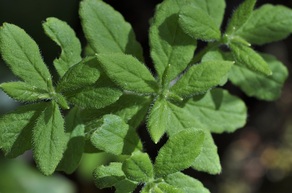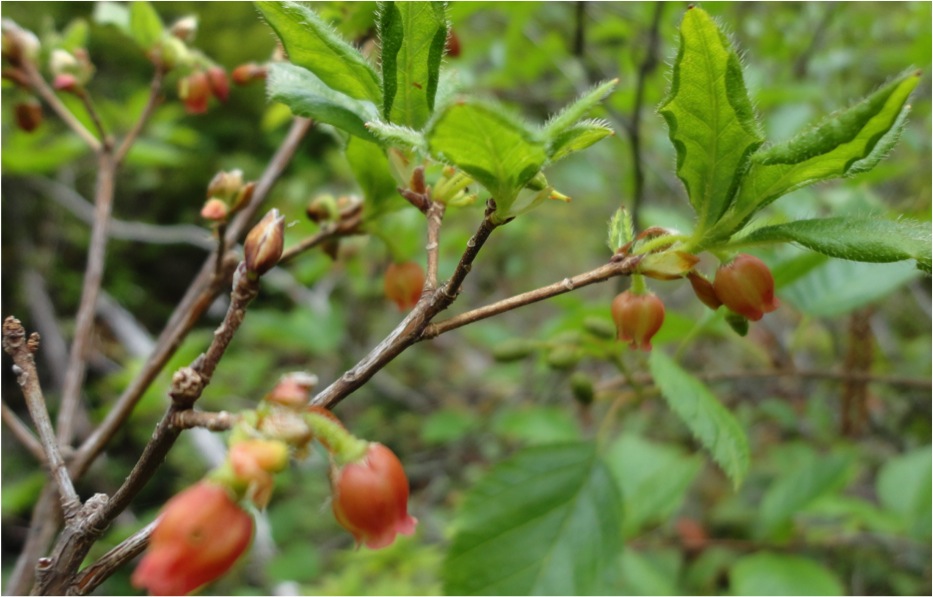False azalea, fool's huckleberry • Menziesia ferruginea
False azalea on Calvert Island. Photos by Kelly Fretwell (top), Kira Hoffman (bottom left), and Sarein Basi-Primeau (bottom right).
Identification
This upright, spreading deciduous shrub reaches around 3 m in height. It is recognizable by both its leaves and its flowers. Its leaves grow in clusters along rust-coloured branches. They are 3-5 cm long, somewhat hairy (the leaves are soft to touch), light green to blueish-green, have wavy margins, and have an oblong or elliptic shape. The leaves turn a bright red-orange colour in the fall. False azalea flowers are small (less than 1 cm long) and hang down in clusters near the ends of branches. They are a pinkish, yellow-white, or light salmon colour, and have an upside-down urn shape with 4 small lobe-like petals.
Habitat & Range
False azalea grows in shaded or open, moist or dry areas. It can be found in coniferous forests and along stream banks, and in nutrient-rich areas it grows from decaying wood. It is found throughout western North America, and is a common coastal species in British Columbia.
Intriguing Info
When crushed, false azalea leaves give off a somewhat skunky scent.
This upright, spreading deciduous shrub reaches around 3 m in height. It is recognizable by both its leaves and its flowers. Its leaves grow in clusters along rust-coloured branches. They are 3-5 cm long, somewhat hairy (the leaves are soft to touch), light green to blueish-green, have wavy margins, and have an oblong or elliptic shape. The leaves turn a bright red-orange colour in the fall. False azalea flowers are small (less than 1 cm long) and hang down in clusters near the ends of branches. They are a pinkish, yellow-white, or light salmon colour, and have an upside-down urn shape with 4 small lobe-like petals.
Habitat & Range
False azalea grows in shaded or open, moist or dry areas. It can be found in coniferous forests and along stream banks, and in nutrient-rich areas it grows from decaying wood. It is found throughout western North America, and is a common coastal species in British Columbia.
Intriguing Info
When crushed, false azalea leaves give off a somewhat skunky scent.
References
Menziesia ferruginea Sm. In Klinkenberg, Brian. (Ed.). E-Flora BC: Electronic Atlas of the Plants of British Columbia. Lab for Advanced Spatial Analysis, Department of Geography, University of British Columbia, Vancouver. Accessed 16/08/2013.
Pojar, J. and MacKinnon, A. (1994). Plants of Coastal British Columbia. Vancouver, BC: Lone Pine Publishing. P. 60.
Authors and editors of page
Kelly Fretwell and Brian Starzomski (2013).
Menziesia ferruginea Sm. In Klinkenberg, Brian. (Ed.). E-Flora BC: Electronic Atlas of the Plants of British Columbia. Lab for Advanced Spatial Analysis, Department of Geography, University of British Columbia, Vancouver. Accessed 16/08/2013.
Pojar, J. and MacKinnon, A. (1994). Plants of Coastal British Columbia. Vancouver, BC: Lone Pine Publishing. P. 60.
Authors and editors of page
Kelly Fretwell and Brian Starzomski (2013).






